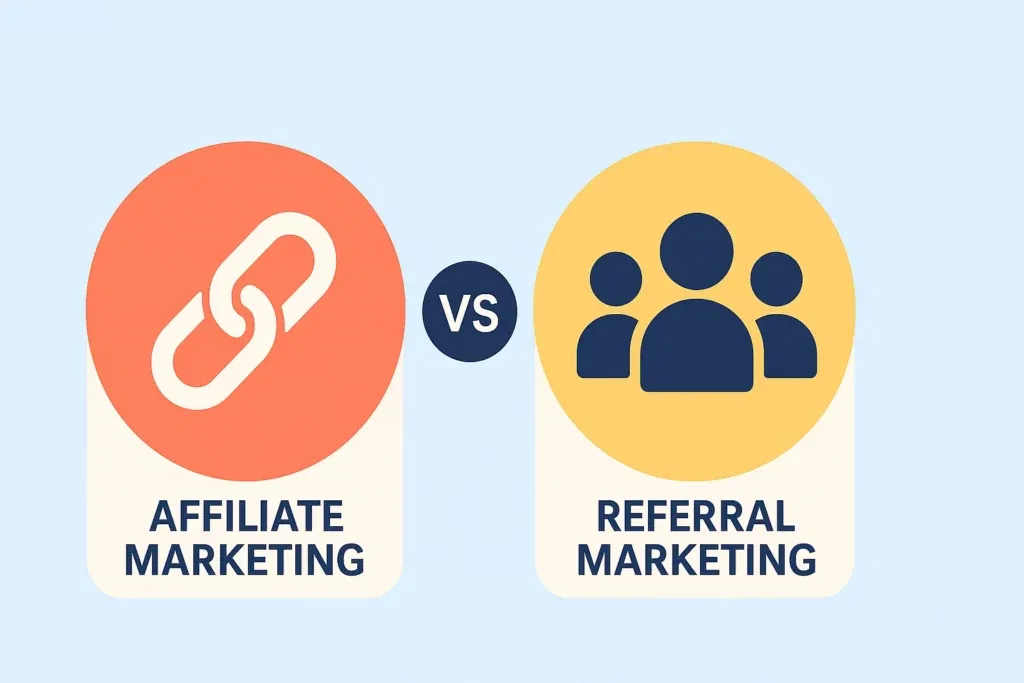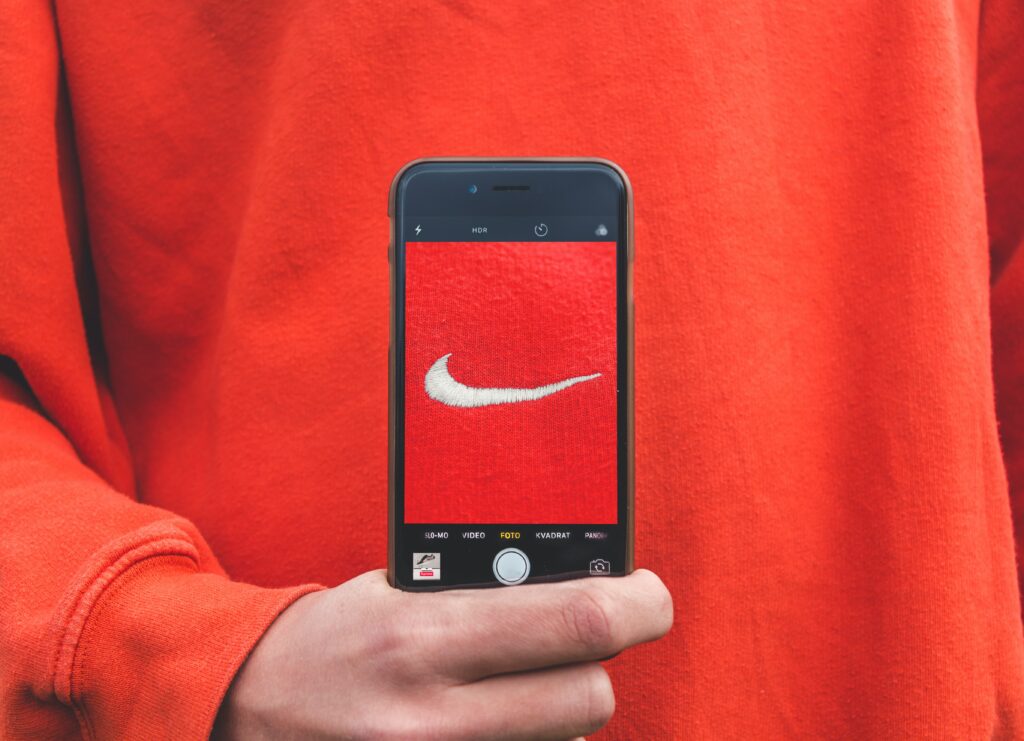Having a reliable method for lead generation is an essential part of growing your brand, simply because more leads can mean more sales.
However, lead generation can be expensive, which is why some businesses turn to affiliate and referral marketing to generate leads at a fraction of the cost and effort.
Whether your product or service requires intensive community marketing or you’re going for a more organic approach, we’ll help you understand the difference between both types of marketing and whether investing in affiliate marketing vs referral marketing is the right move.
Let’s start with affiliate marketing.
Table of Contents
Affiliate Marketing vs Referral Marketing: Quick Overview
| Aspect | Affiliate Marketing | Referral Marketing |
| Definition | Affiliates (content creators like bloggers, influencers) promote a business’ products/services in exchange for commissions. | Existing customers recommend a business to people they know, often incentivized by rewards. |
| Who Promotes | Third-party affiliates (bloggers, influencers, key opinion leaders). | Existing paying customers. |
| Primary Audience | Followers, blog readers, social media audiences (often broader reach). | Friends, family, personal networks (more personal and trust-based). |
| Incentive | Commission per sale or signup (percentage or flat fee). | Referral rewards (discounts, freebies, cash for both referrer and new customer). |
| Tracking Method | Affiliate links or codes tracked via affiliate networks or software. | Referral links or codes tracked via referral software. |
| Best For | Brands looking to tap into new audiences through influencers and content creators. | Brands relying on word-of-mouth and customer loyalty to grow their user base. |
| Setup Complexity | May involve joining affiliate networks, setting up tracking software, managing affiliate relationships. | Simpler setup with referral software; focus on user-friendly referral processes. |
| Cost Structure | Ongoing commission payments and possibly network fees. | Cost tied to rewards given for successful referrals. |
| Examples | Amazon Associates, Pinterest affiliate links. | Dropbox’s free storage for referrals, ride-sharing app referral bonuses. |
| Ideal When | You have products/services suitable for multiple niches and want broader exposure. | You have a loyal customer base likely to recommend your business to others. |
What Is Affiliate Marketing?
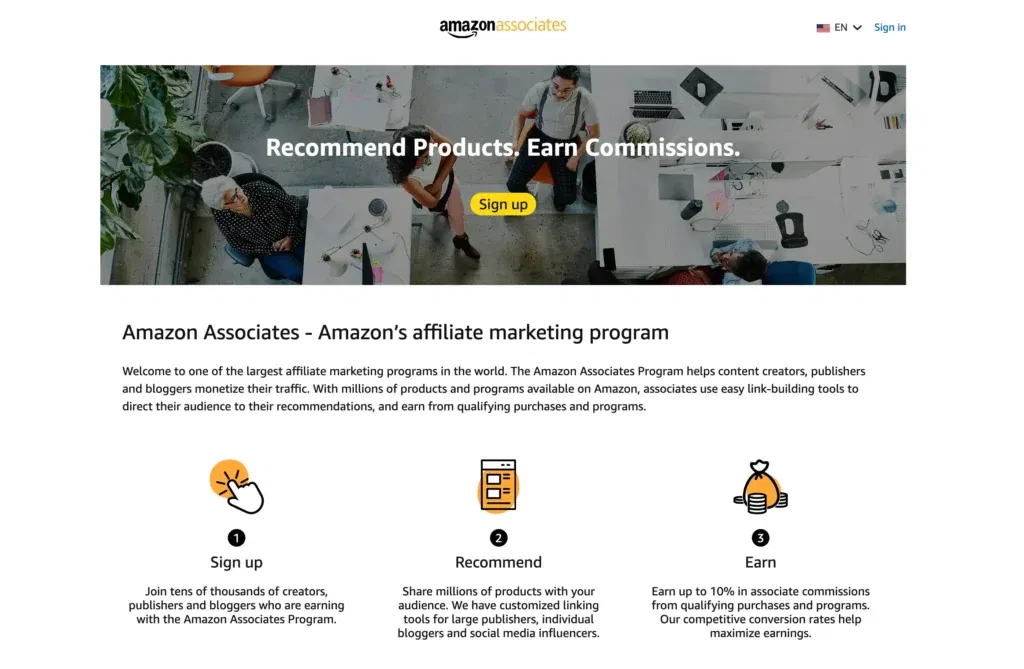
Affiliate marketing was made famous in the early 2000s by lifestyle and niche blogs. Back then, individual bloggers would contact brands they wanted to work with to create a “mini” affiliate program.
Affiliates earn a commission by promoting the brand’s products or services on their blog and sometimes act as an unofficial spokesperson for the brand; meanwhile, the brand gains exposure and a new clientele from the blog’s readership base.
So, in short, an affiliate is a content creator (blogger, vlogger, influencer, etc.) who shares a brand’s product or service and gets a commission every time someone makes a purchase through them.
This process is made easier by the presence of a tracking method for these referrals, usually an affiliate link or code the person making a purchase clicks or enters.
Many large e-commerce websites started to adopt the model, and soon enough, affiliate programs became the standard of influence in the industry.
Perhaps the most famous of these is the Amazon affiliate program, Amazon Associates, which allows creators to earn a commission every time someone orders a product on Amazon using their affiliate link. Similar to it is the Pinterest model, which allows board creators to earn commissions through their recommendations.
How Does an Affiliate Marketing Program Work?
Here are the main components of every affiliate program and how they work together:
The Business
Setting up the affiliate program is done by the business that wants more traffic directed to it. After creating the program, the business invites affiliates to participate and draws up an agreement with them. In exchange for their digital marketing efforts, they will enjoy a commission for every signup or purchase.
When we consult with various business owners about their expectations from an affiliate program, we make sure their business and brand can actually benefit from this arrangement. Recently, this has become more feasible thanks to the wide array of influencers who fill very specific niches that correspond with almost all products and services.
The Affiliate

Usually, the affiliate is someone with an audience they can tap into. They can be a blogger, social media influencer, celebrity, or KOL (key opinion leader) within a specific niche.
They use their platform to promote the business and, in turn, get rewarded for the traffic they drive through blog posts, email lists, YouTube and TikTok videos, or social media using their unique affiliate links.
The most successful affiliates are usually the “wildcards,” who can promote a variety of businesses without sounding odd to their followers. Many of them are generalists who offer lifestyle content with no specific scope, although many niche influencers end up with a significant reach and the ability to create leads for businesses that closely align with their brand.
The Customer

The customer is the main focus of the program, with both the business and the affiliate encouraging them to use the program through incentives.
These can include a discount upon signing up or with any purchase using the affiliate link, special perks and freebies, or the convenience of presenting the product or service to someone who otherwise wouldn’t have used it.
Commission
Depending on the agreement between the business and the affiliate, the commission earned can be a percentage of every purchase through the affiliate link, a flat fee on every signup, or a combination.
According to the FTC, any online marketing affiliate who has an active relationship with a business has to disclose that they earn a commission through their links or codes.
(Optional) Network or Software
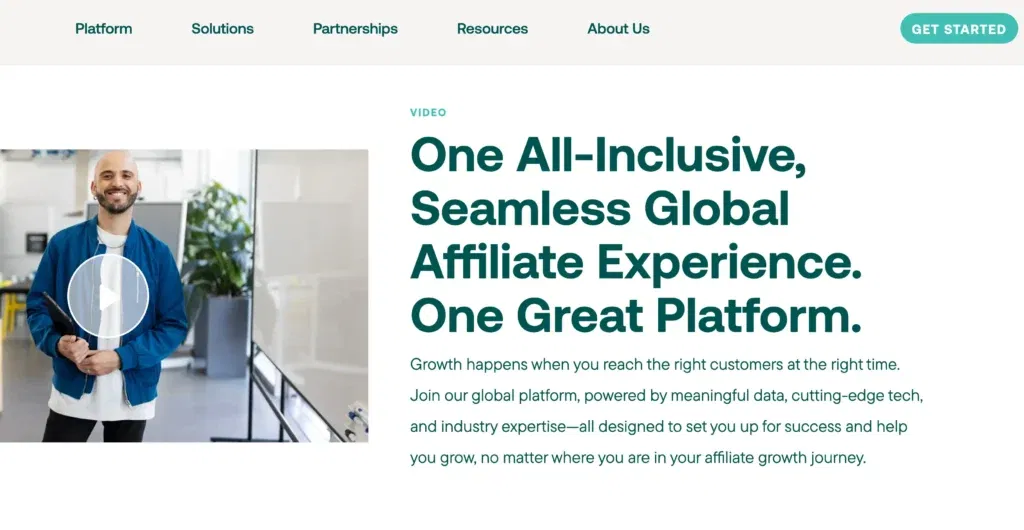
Tying it all together is usually an affiliate network like ShareASale/Awin, or CJ Affiliate. These networks have a vast reach within the business and affiliate communities, so they connect both sides and make a profit when the service exchanges hands.
Some larger businesses prefer to use an in-house marketing software that builds the affiliate program from scratch and helps with tracking and payments. Although this choice requires an upfront investment in the software and needs to be run by an employee, it cuts out the middleman and saves on operational costs as time goes by.
Now that we have an idea about affiliate programs, let’s take a deeper look at referral marketing programs and how they work.
What Is Referral Marketing?
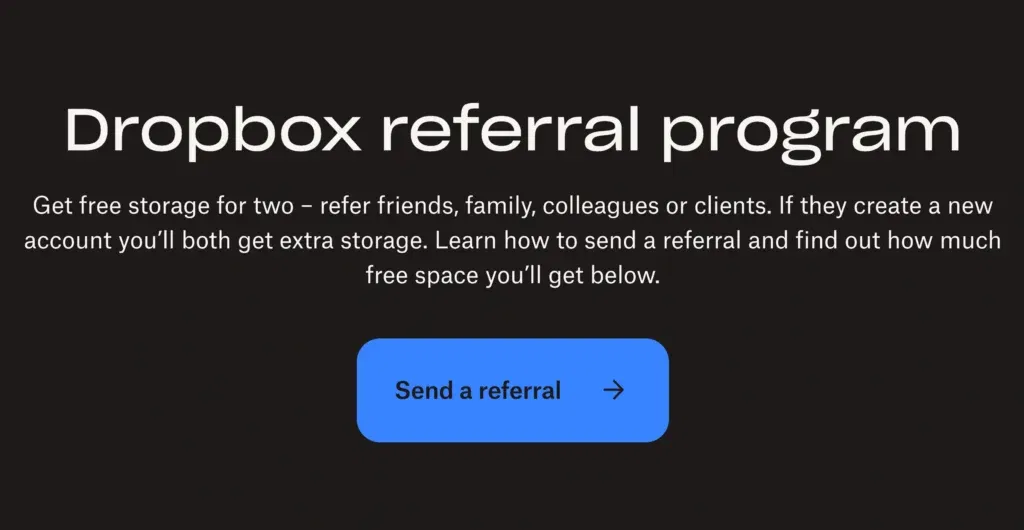
Referral marketing used to be known as word-of-mouth marketing back in the day. This is when a paying customer likes the product or service they received from a business so much that they talk about it with another person they know, encouraging them to try it out for themselves.
Within the current marketing strategy, a successful referral is usually complete when the new (referred) customer makes a purchase from the business. There’s also an incentive for the referrer to keep spreading the word, which could be a freebie, discount, or even cash.
How Does a Referral Marketing Program Work?
Here’s the main framework of a referral program:
The Business
Just like with affiliate programs, a referral program is set up by a business to increase leads. You might think it’s only applicable to B2C operations, but many B2B companies have excellent, highly effective referral programs.
Whenever we create a referral program for a business, we make sure they have the right expectations about its outcomes. For example, if a business is still starting out and only has a few customers, the revenue from referrals will likely be lower than if the business has a wide user base.
The Referring Customer (Existing)
The person doing most of the heavy lifting in the referral framework is the referring customer; they share their opinion about the business and why they chose it and usually act as an impromptu brand ambassador for the duration of the campaign.
To get the most out of a referral program, you should make the referring customer’s job easier by creating a lucrative referral reward, as we’ll discuss below.
This isn’t the only thing you can do, though. Having a straightforward, easy-to-understand-and-share referral mechanism can also be a determining factor in how successful your referral program is.
If the program requires too many steps or is super demanding of the referring and referred customers, they’ll be less likely to give it a shot, even if the reward is enticing.
The Referred Customer (New)
The referred customer is the person getting to know your business and is looking for a cheap and easy way to opt into the product/service you provide. Think of the referral program as their first brush with your values and a chance to prove to them that they’ve made a good choice.
You can ask the following questions: What do you want the new customer to know about your brand? How can you excite them about trying out what the business has to offer? If they make a purchase, are they likely to stay and try your other offerings?
Referral Reward

Getting someone’s foot in the door is the first job of the referral reward. What comes next is convincing them to keep choosing your brand. This requires knowing the target demographic you’re after, what matters most to them, and how you can turn the same customers into more spokespeople for your business.
Luckily, having any kind of tangible reward system, be it free perks, upgrades, discounts, or even cold hard cash, is a tried and true method of rewarding both existing and new customers for participating.
If you’re still building your referral program, you can conduct market research to find what motivates your demographic to spread the word about a brand they like. This can be done by looking at similar programs from competitors, conducting user surveys, or simply asking people to submit their suggestions.
That said, avoid the mistake of promising too much or too little. If your rewards are too hefty, you might end up spending more on the program than you’re poised to earn from it. On the other hand, if the reward is too small, it might not be worth the trouble for your customers and fail to incentivize either side of the program.
Referral Software
Creating a referral program now has become much easier thanks to the various referral software options on the market today. The software allows you to automate:
- The creation of unique referral links or codes for each subscribing customer
- Tracking customer referrals for points
- Dispensing rewards to customer accounts without fear of duplicates or skipped entries
This is a crucial piece of the puzzle because it allows business owners and their marketing teams to enlist the help of a referral campaign without the need for coding experience or long hours of tracking. It also brings everything together so you can see how efficient the program is, monitor its growth, and apply changes to it if needed.
Referral Marketing vs Affiliate Marketing: Which One Is the Right Choice for Your Business?
Now that you know the difference between referral marketing and affiliate marketing, you can pick the type of program your business is more likely to benefit from.
It’s not at all unusual to find that both affiliate and referral programs have advantages your brand can benefit from. However, if your budget is limited to only one type, we suggest you start with the type that can bring in more certain results faster.
For example, if your brand can be tied to multiple influencer niches at once and you can make a good deal in commissions to get some micro and nano influencers on board, start with an affiliate program.
On the other hand, if your target demographic values word-of-mouth and first-hand experience more, then a referral program is more likely to bring in leads.
Our Marketing Strategy, Your Way
At Vivian Agency, we think that both referral and affiliate marketing can help you reach your goals, even if through different means. What’s important is for you to figure out which is the right fit at the moment to focus your efforts and resources on.
To help you decide what your next marketing move should be, book a call with us, and let’s talk about what your business needs! And if you have any questions, don’t hesitate to contact us here.
